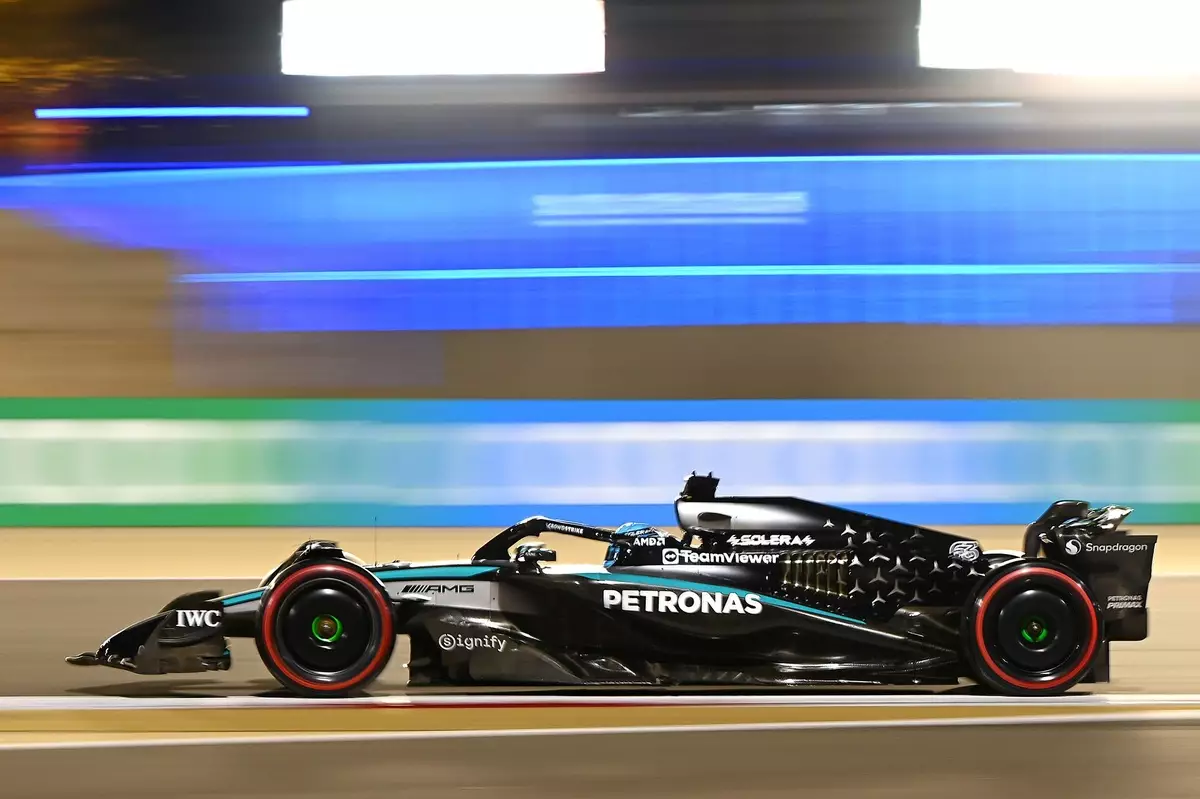In a sport where split-second decisions and unparalleled precision are paramount, the Formula 1 season has never been shy of drama or surprises. Mercedes, a name synonymous with dominance over the last decade, has found itself navigating turbulent waters. The 2024 season commenced with an unmistakable struggle, as demonstrated by George Russell and Lewis Hamilton finishing a staggering 45 seconds behind race winner Max Verstappen in Bahrain. However, as the calendar turned and the races unfolded, a notable evolution has emerged, presenting the Silver Arrows with renewed hope.
Fast forward thirteen months, and the dynamics within the paddock have shifted. Russell managed to carve out a space within the highly competitive ranks, seamlessly slotting himself between the two seemingly invincible McLaren cars, which speaks volumes about Mercedes’ resilience and adaptability. This performance didn’t just signify a podium finish; it represented a comparative leap from their earlier setbacks, positioning Mercedes as a relevant adversary for McLaren’s aggressive pursuit of dominance.
Adapting to Challenges: A Test of Character
The Bahrain Grand Prix was far from just another race; it acted as a litmus test revealing the mettle of the team. The harsh conditions of the desert—notably the high temperatures and abrasive track surface—were expected to challenge Mercedes significantly. However, Toto Wolff, Mercedes’ team principal, conveyed an unexpected sense of optimism post-race. With a P2 and P4 qualification, the team managed to exceed baseline expectations, culminating in a performance that raised eyebrows across the paddock.
Wolff’s words echo a philosophy that rings true in competitive sports: success is not merely defined by victory, but by surpassing expectations in the face of adversity. This nuance in understanding allows a team to assess progress differently—one devoid of the singular focus on winning but rather embracing the gradual reclamation of competitiveness. Indeed, the podium finish was accompanied by a sense of achievement that transcended the numerical value of points.
Analyzing the Race: A Balancing Act
Yet, as Mercedes tasted this semblance of resurgence, the gap to McLaren remains a point of contention. While Oscar Piastri’s commanding performance showcased McLaren’s current superiority, Mercedes’ struggles with a lingering brake-by-wire failure and electronic glitches reveal the fragility that still lies beneath their polished exterior. Russell, in the midst of battling tire wear and mechanical obstacles, executed a masterclass in race management—proving his mettle on the track once again.
In this context, one cannot overlook the astute engineering prowess displayed by McLaren. The capability to maintain grip and tire performance is indicative of their progress and deep-rooted understanding of this complex sport. Wolff’s acknowledgment of this reality serves as both a humbling reminder and a challenge—if Mercedes is to reclaim the pole position, it must address the intricacies of its automotive design and strategy. The competition’s edge is razor-thin, and any slip can be perilous.
The Road Ahead: Grit in the Face of Adversity
Despite the challenges facing Mercedes, there exists a tangible sense of optimism underpinning their strategy moving forward. Adapting to a car that proves less forgiving has forced Russell to evolve as a driver, revealing not only his technical prowess but also an ability to strategize under pressure. As Wolff aptly noted, managing such electronic adversity in tandem with high-stakes competition is nothing short of “unbelievable.” Russell’s ability to navigate difficult situations brings to light the essence of a true racer—one willing to push himself to the limits, showcasing skill amidst chaos.
Furthermore, the dynamic landscape of Formula 1 means that change is constant; the lessons learned in Bahrain and subsequent races will undoubtedly shape the decisions made at Mercedes. Challenges such as tire management, aerodynamic balance, and electronic failures highlight areas needing further refinement but also create opportunities for innovation and growth.
As the season progresses, the Silver Arrows are not just battling their competitors, but also grappling with their own expectations and aspirations. The ongoing competition with McLaren serves as a reminder that even legends face challenges—but it is in how they respond to those challenges that defines them. In the heart of the race, amidst roaring engines and blaring team radios, it is this tenacity and spirit that will define the next chapters of Mercedes’ storied legacy.


Leave a Reply